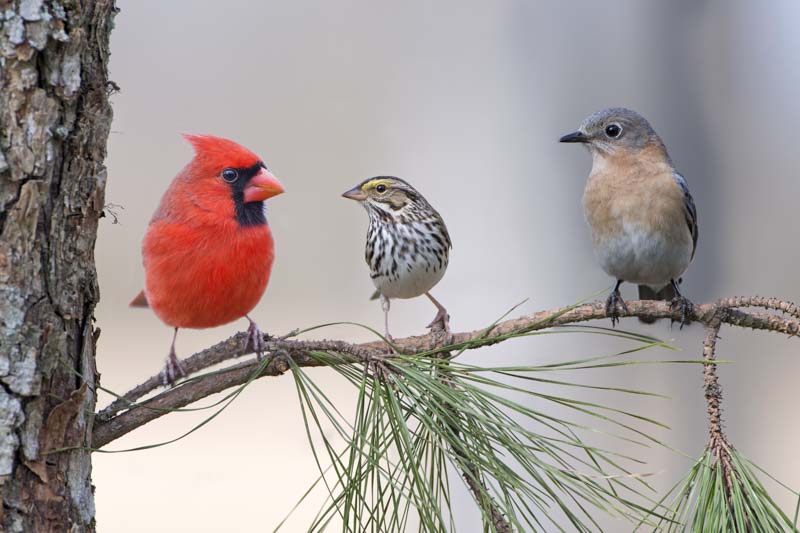For small gardens, consider compact and ornamental pine trees and shrubs like Dwarf Mugo Pine, Japanese Black Pine, Easter White Pine, Pinyon Pine and many more for year-round interest and minimal space usage.
Pine trees, belonging to the genus Pinus, are evergreen conifers recognized for their long, needle-shaped leaves and distinctive cone-bearing prowess. These majestic trees are native to various regions across the Northern Hemisphere, with species adapting to a wide range of climates and soils, making them incredibly versatile in both wild and cultivated landscapes.
Pines are notable for their rugged hardiness, capable of thriving in challenging environments from cold mountain ranges to hot, dry plains. This resilience, coupled with their varied sizes and forms, from towering giants to modest shrubs, allows pines to play a crucial role in ecosystems. They provide essential habitats and food sources for wildlife, including birds, squirrels, and numerous insects, which depend on pine forests for survival.
For small gardens, selecting pine trees that fit the space without overwhelming it is key. The Mugo Pine (Pinus mugo) is a popular choice for its compact size and resilience, perfect for limited areas. The Pinyon Pine (Pinus edulis), known for its edible nuts, offers both beauty and practicality. The Japanese Red Pine (Pinus densiflora) provides a unique aesthetic with its vibrant bark and delicate foliage. The Bosnian Pine (Pinus heldreichii), is prized for its robust nature and striking appearance, suitable for rock gardens. The Dwarf Siberian Pine (Pinus pumila) adapts well to cold climates and maintains a manageable size. Eastern White Pine (Pinus strobus), in its dwarf varieties, is a graceful addition that offers soft, feathery foliage. Austrian Pine (Pinus nigra) is valued for its dense, dark green foliage and robust growth, making it an excellent windbreak or privacy screen even in small garden. Lastly, Scots Pine (Pinus sylvestris) brings a touch of the wild with its rustic charm and adaptability.
These types of pines provide year-round interest and habitat for wildlife, making them excellent choices for small garden spaces.

Pine trees and shrubs attract a wide array of wildlife due to their structure, foliage, and the resources they provide.
As an example, the Eastern White Pine, a native pine tree, is a magnet for a diverse array of birds, including the American Robin, Black-Capped Chickadee, Blue Jay, Cedar Waxwing, House Finch, Mourning Dove, Northern Cardinal, Pine Siskin, Tufted Titmouse, various Warblers, and the White-Breasted Nuthatch.
The dense foliage of pines provides shelter from predators and harsh weather conditions, making them indispensable havens for wildlife in both rural and urban settings, fostering a rich and dynamic ecosystem.
Selecting the right pine species or shrubs for small gardens can add structure and beauty without overwhelming the space. Here are 27 popular pines suitable for smaller gardens
Create a membership account to save your garden designs and to view them on any device.
Becoming a contributing member of Gardenia is easy and can be done in just a few minutes. If you provide us with your name, email address and the payment of a modest $25 annual membership fee, you will become a full member, enabling you to design and save up to 25 of your garden design ideas.
Join now and start creating your dream garden!
Create a membership account to save your garden designs and to view them on any device.
Becoming a contributing member of Gardenia is easy and can be done in just a few minutes. If you provide us with your name, email address and the payment of a modest $25 annual membership fee, you will become a full member, enabling you to design and save up to 25 of your garden design ideas.
Join now and start creating your dream garden!